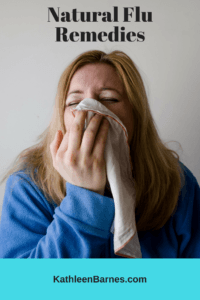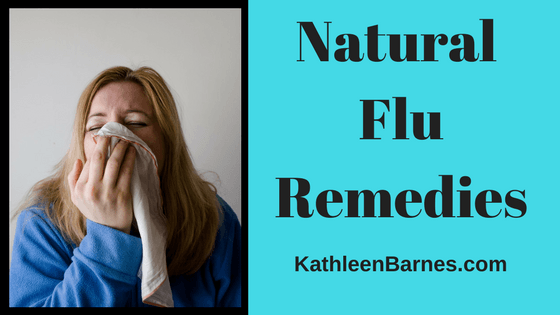 There is no doubt about it, 2018 has been a bear of a flu season. I had it and practically everyone I know has had it.
There is no doubt about it, 2018 has been a bear of a flu season. I had it and practically everyone I know has had it.
Fortunately, I don’t know anyone who has had serous complications, but it certainly hasn’t been fun and serious complications have taken place.
Flu shots haven’t seemed to prevent flu this year at all. In fact, I saw one study that showed the viral remnants of sneezes and coughs from people who had the shots actually stayed active longer than for those who didn’t get the shots, meaning that those who got flu shots were far more contagious than those who didn’t.
And this year’s flu, the H3N2 strain, is fast mutating, meaning that the vaccine concocted more than a year ago has little to no effect because the wily virus knows how to shapeshift.
That also means you can get it more than once, since we don’t build up much resistance to the fast mutating virus. My granddaughters have had it twice, the latest being last week. Their pediatrician told my daughter not to bring them into the office, which is packed with sick kids.
The season is almost over, but it’s still around, so please be vigilant about hand washing and avoiding touching surfaces like door handles, shopping carts, elevator buttons and more. You get the idea.
It’s usually not the flu, but accompanying pneumonia that causes serious complications and even deaths.
Antibiotics are no good against viruses. They are very specific drugs that target bacterial infections that can result from the flu and even colds. Unfortunately, antibiotics are far overused in our society, causing us to build up a resistance to them so they don’t work when we need them most.
The worst-case scenario is that our incorrect use of antibiotics has fostered the evolution of antibiotic resistant bacteria, sometimes called “superbugs.” These bacteria multiply out of control, sometimes with fatal consequences, even in the presence of antibiotics once successfully used to treat them. Absolutely, if you have bacterial pneumonia or a serious bacterial infection, take antibiotics. We are fortunate to have them for this purpose.
Also, Tamiflu, the new go-to anti-viral, is not an antibiotic, but it can have serious side effects, like abnormal heart rhythm, abnormal liver function seizures, life-threatening allergic reactions, hepatitis and more. Common side effects include vomiting, diarrhea and hallucinations. Is it worth it when studies show all it does is reduce the duration of the flu by one day?
Otherwise, we are quite fortunate to have a natural medicine chest of anti-microbial plants that can be effective against viral, bacterial and even fungal infections–all without dangerous side effects—so it’s not necessary to know what pathogen is causing your problem.
Propolis: This substance, sometimes called “bee glue” produced by bees to seal their hives and protect them from infections is “the single most powerful antimicrobial we have in the plant kingdom,” according to Medicine Hunter Chris Kilham, author of numerous books on plant medicine, including Tales from the Medicine Trail.
Numerous studies confirm propolis’ effectiveness against bacterial, viral and fungal infections. Among them, a 2005 study from the University of Hacettepe in Ankara, Turkey, showed propolis was effective even in killing antibiotic resistant MRSA and VRE bacteria as well as other studies that show its ability to knock out upper respiratory infections and Candida albicans fungal infections.
“In fact, I gave a fluid Brazilian green propolis to a student who had an antibiotic-resistant MRSA skin infection for two and a half years,” says Kilham. “She got rid of it quickly.”
Propolis is also available in pill form.
Olive leaf extract: This traditional medicinal is the first botanical mentioned in the Bible and recent research confirms its effectiveness against a wide variety of microbial infections. A USDA study published in the Journal of Food Sciences confirms that olive leaf extract is effective against food-borne pathogens like salmonella and e coli, calling them “broad spectrum antimicrobials” and a New York University School of Medicine (published in Biochemical and Biophysical Research Communications) showed olive leaf extract reversed many of the HIV-related change in the immune system.
Now retired medical journalist Morton Walker, DPM, author of Nature’s Antibiotic: Olive Leaf Extract, wrote that olive leaf extract “inhibits the growth of every virus, bacterium, fungus, yeast and protozoan it was tested against . . .and it is effective against a minimum of 56 disease-causing organisms.”
Elderberry syrup: And then there’s my favorite, elderberry syrup. I make my own tincture every year. Long standing research confirms that taking elderberry syrup at the first sign of a cold or flu knocked out the symptoms in 93% of those studied within two days. It brings down fevers and relieves coughing and congestion. Plus, it tastes delicious, so kids love it! It’s always in my medicine cabinet.
BTW: All of these natural antimicrobials are safe and effective for all ages and are side-effect free.
If you’d like a few more natural ways to knock the flu, take a look here: https://www.terrytalksnutrition.com/health-articles/natural-flu-fighters-3/







